Window blinds are an essential part of any home, providing privacy, controlling light, and enhancing the overall aesthetic. Over time, they can accumulate dust, dirt, and grime, making it crucial to clean them regularly.
In this comprehensive guide, we will delve into the importance of cleaning window blinds, explore the different types of blinds available, and provide an in-depth look at the tools and materials needed for effective cleaning. We will offer step-by-step instructions on how to clean various types of window blinds, including:
- Vertical blinds
- Horizontal blinds
- Roman blinds
- Roller blinds
We’ll share valuable tips and tricks for maintaining clean window blinds, ensuring they remain in pristine condition for years to come. Whether you’re a seasoned homeowner or a novice in the world of window treatments, this article will equip you with the knowledge and insights needed to keep your blinds looking their best.
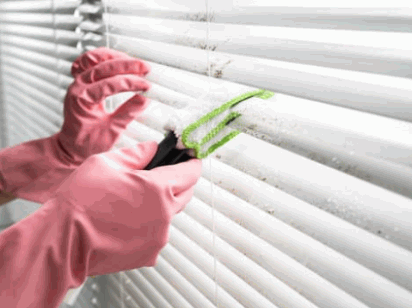
What Are Window Blinds?
Window blinds are a popular choice for window coverings due to their versatility and functionality.
They come in various types such as vertical, horizontal, wooden, aluminum, and fabric blinds, each offering a different aesthetic and light control. Regular cleaning and maintenance are essential for prolonging their lifespan and keeping them looking fresh.
Dusting or vacuuming the blinds regularly helps to remove dust and other allergens, maintaining a healthier indoor environment. Proper maintenance can prevent issues such as slat misalignment and cord tangles, ensuring that the blinds operate smoothly and effectively.
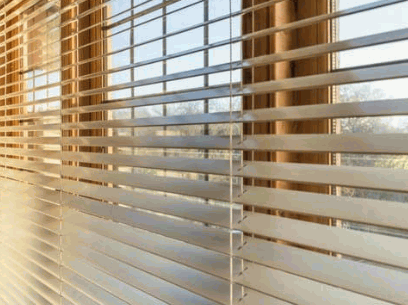
Why Is It Important To Clean Window Blinds?
Cleaning window blinds is an essential household chore that often gets overlooked, but it plays a crucial role in maintaining a clean and healthy living environment.
Window blinds can accumulate dust, allergens, and stains over time, which can negatively impact indoor air quality and contribute to allergic reactions and respiratory issues. Regular cleaning of window blinds not only removes these pollutants but also enhances the overall appearance of the room.
It is recommended to use a microfiber cloth or vacuum attachment to effectively remove the dust and debris from the blinds. Tackling any stubborn stains with a gentle cleaning solution can help to maintain the blinds and prolong their lifespan, making it an important part of home cleaning and maintenance tips.
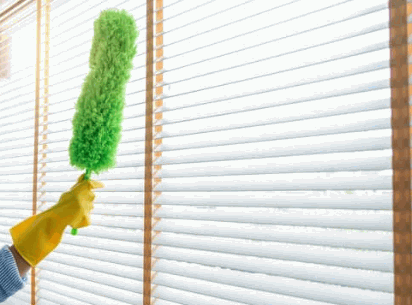
What Are The Different Types Of Window Blinds?
Window blinds come in various types, including:
- vertical blinds, ideal for large windows and sliding glass doors, as they can be easily adjusted to allow light in or provide privacy.
- horizontal blinds, also known as Venetian blinds, offer a classic and versatile look, with adjustable slats for controlling light and airflow.
- Roman blinds, exude an elegant, tailored appearance, making them popular in formal living spaces.
- Roller blinds, are perfect for a minimalistic and modern aesthetic, offering a seamless and sleek window covering option.
Vertical Blinds
Vertical blinds require regular cleaning and maintenance to keep them looking new and functioning properly.
Dust and dirt tend to accumulate on the slats of vertical blinds, making it essential to dust them regularly to prevent build-up. Vacuuming with a brush attachment or using a microfiber cloth are effective methods for removing dust and debris. For deeper cleaning, gentle wiping with a damp cloth and mild detergent can be beneficial. It’s important to avoid using harsh chemicals or abrasive materials that could damage the delicate surfaces of the blinds. Checking the mechanisms and ensuring they are well-lubricated can prolong the lifespan of your vertical blinds.
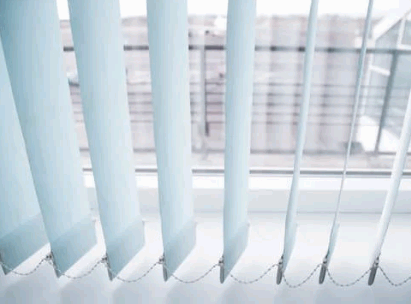
Horizontal Blinds
Horizontal blinds, also known as Venetian blinds, are a classic window treatment option that requires regular dusting and wiping to maintain their pristine appearance and functionality.
This regular maintenance helps to prevent the accumulation of dust, dirt, and grime, which can not only detract from the visual appeal of the blinds but also affect the air quality in the room.
When cleaning horizontal blinds, start by dusting them with a microfiber cloth or a duster to remove loose particles. Follow this with a gentle wipe using a mild cleaning solution and a soft cloth to remove any stubborn dirt or residue. This thorough cleaning process can help prolong the life of your blinds and keep them looking fresh and new.
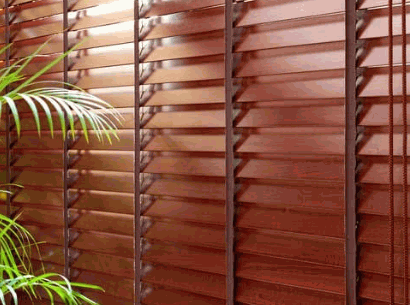
Roman Blinds
Roman blinds require specific cleaning and maintenance techniques to preserve their elegant appeal.
Regular vacuuming is key to keeping them free from dust and dirt, especially in the folds and creases. A gentle brush attachment can help remove any build-up without damaging the delicate fabric. Spot cleaning with a mild detergent and warm water can tackle any stubborn stains. It’s important to avoid harsh chemicals and excessive moisture that could compromise the integrity of the blinds. By incorporating these maintenance practices into your routine, you can ensure that your Roman blinds continue to enhance the aesthetic of your space for years to come.
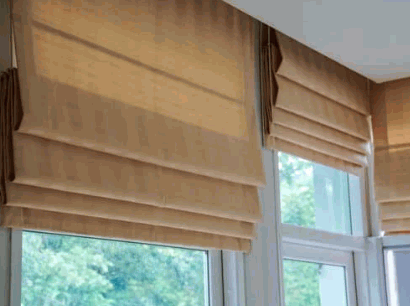
Roller Blinds
Roller blinds can easily accumulate dust, stains, and odors over time due to their exposure to the elements and everyday use.
To effectively clean roller blinds, prepare a solution of mild detergent or vinegar and water. Begin by removing the blinds from their fixtures and laying them flat on a clean surface. Gently wipe the blinds with the solution using a soft cloth or sponge, paying extra attention to any areas with visible stains or odors. After cleaning, rinse the blinds thoroughly with clean water, ensuring that all detergent or vinegar residues are completely removed. Allow the blinds to air-dry before rehanging them. This simple yet thorough cleaning process can help restore the freshness and appearance of your roller blinds.
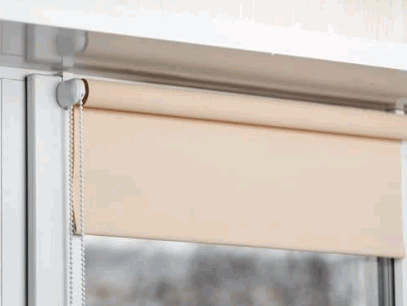
What Are The Tools And Materials Needed To Clean Window Blinds?
When cleaning window blinds, it is crucial to have the right tools and materials on hand.
A microfiber cloth is an essential tool for removing dust and debris from blinds without scratching the surface. A soft-bristled brush can be used to reach and clean the narrow spaces between slats. A vacuum with a brush attachment can be handy for removing stubborn dirt and pet hair. For deep cleaning, a mild cleaning solution and water mixture, along with a spray bottle, can help tackle tough stains. A pair of gloves and a step ladder are necessary for safety during the cleaning process.
Check out: What Is The Best Floor Cleaning Mop
Microfiber Cloth
When it comes to cleaning window blinds, using a microfiber cloth can make the process much easier and more effective.
Microfiber cloths are renowned for their ability to attract and trap dust particles rather than just spreading them around, making them ideal for delicate surfaces like window blinds. Their soft and gentle texture ensures that they won’t scratch or damage the blinds while effectively removing dirt and grime. The electrostatic charge in microfiber cloths enhances their wiping capabilities, leaving blinds streak-free and spotless with minimal effort. This makes them a valuable tool for maintaining a clean and dust-free environment in any home or workspace.
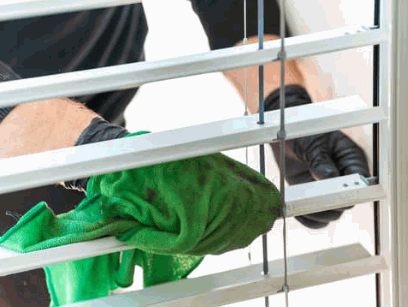
Vacuum Cleaner
A vacuum cleaner with a soft brush attachment is an excellent tool for dusting and maintaining window blinds, especially for removing accumulated dust and debris from the slats and fabric.
This gentle brush attachment allows you to effectively loosen and capture dust particles without causing damage to the blinds. Regular use of the vacuum cleaner with the soft brush not only creates a clean and tidy appearance but also helps in maintaining the longevity of the blinds. It’s a convenient and efficient method for those hard-to-reach areas between the slats. By incorporating this cleaning technique into your routine, you can ensure that your window blinds remain free from dust and well-maintained, enhancing the overall cleanliness of your living space.
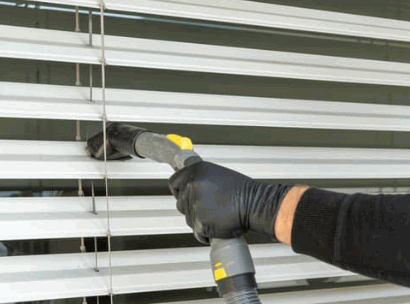
Mild Soap Or Detergent
When it comes to cleaning window blinds, using mild soap or detergent can be highly effective in removing stubborn stains and built-up grime.
The gentle yet powerful cleaning properties of mild soap or detergent can effectively break down and lift away dirt and stains from the surface of the blinds. This method is especially useful for removing grease and oil-based stains that tend to accumulate on blinds. By diluting the soap or detergent in water and using a soft cloth or sponge, you can easily wipe down the blinds, ensuring that they remain clean and free from any unsightly marks or blemishes. Regular cleaning using this method can help maintain the appearance and longevity of your window blinds.
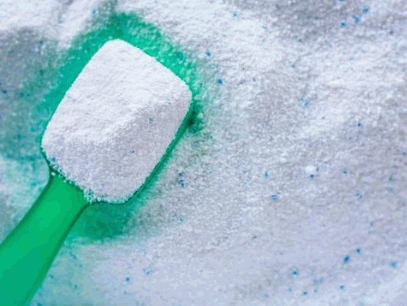
Bucket
When it comes to preparing cleaning solutions for window blinds, having a suitable container, such as a bucket, is essential for an effective and organized cleaning process.
The use of a bucket allows you to mix the cleaning solution with water in a large enough quantity to ensure that your blinds are thoroughly cleaned. It also provides a convenient way to carry the solution from one window to another without the risk of spilling or making a mess. The depth of a bucket enables you to submerge the blinds entirely, allowing for a more efficient and comprehensive cleaning process.
Having a bucket for preparing cleaning solutions simplifies the task of maintaining clean and spotless window blinds.
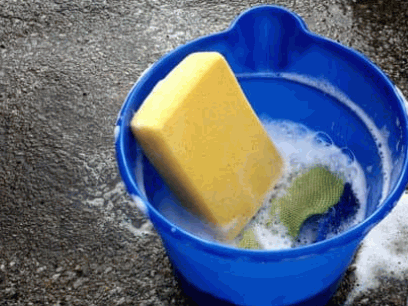
Water
Water plays a crucial role in the cleaning and maintenance of window blinds. It is the key component in preparing effective cleaning solutions for removing dust, grime, and stains from the blinds. By mixing water with a mild detergent or vinegar, it becomes a versatile cleaning solution that not only cleans the blinds but also helps to preserve their quality. Water also aids in rinsing off the cleaning solutions, leaving the blinds looking refreshed and well-maintained. Its use in the cleaning process ensures that the blinds remain in good condition, extending their lifespan and contributing to a cleaner living environment.

How To Clean Different Types Of Window Blinds?
Cleaning different types of window blinds involves specific techniques and methods tailored to each design, ensuring comprehensive cleaning and maintenance for a spotless and bright appearance.
For aluminum blinds, a gentle wipe with a damp microfiber cloth or a vacuum with a brush attachment can effectively remove dust and dirt.
Vertical blinds made of fabric can be gently vacuumed or spot-cleaned with a mild detergent and water solution.
Wood and faux wood blinds require extra care, using a wood cleaner or a mix of mild soap and water on a soft cloth.
Cellular shades need a delicate touch, using a hairdryer on a cool setting to blow away dust.
These tailored methods ensure your blinds remain clean and well-maintained.
Vertical Blinds
When it comes to maintaining the cleanliness of vertical blinds, regular dusting and vacuuming are essential.
Dusting the blinds can be done with a lamb’s wool duster, microfiber cloth, or a special blind-cleaning tool. Ensure to start from the top and work your way down to effectively remove dust and dirt. For a thorough clean, vacuum the blinds using a brush attachment or a handheld vacuum. Be gentle to avoid damaging the delicate slats. These techniques are crucial in preventing dust buildup and maintaining the appearance of your vertical blinds.
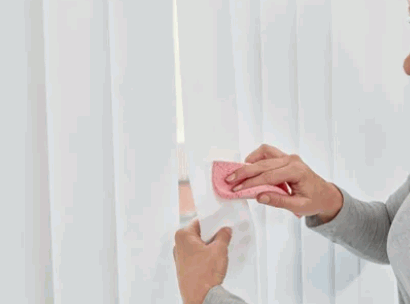
Roman Blinds
When it comes to cleaning Roman blinds, it’s important to use specific techniques to maintain their appearance and functionality.
Regular vacuuming with a soft brush attachment is an effective way to remove dust and debris from the fabric without causing damage. By gently running the brush over the surface of the blinds, you can ensure that they stay clean and well-maintained.
It’s also crucial to pay attention to any specific cleaning instructions provided by the manufacturer to ensure that the blinds are cared for properly. This simple yet essential maintenance routine can help prolong the life of your Roman blinds and keep them looking their best for years to come.
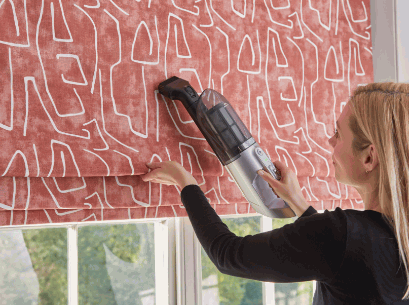
Roller Blinds
Cleaning roller blinds can be a simple yet effective way to freshen up your space, especially when dirt and stains start to accumulate.
To begin the cleaning process, start by filling a bucket with a mild detergent or vinegar and water solution. Gently remove the blinds from their fixtures and immerse them in the solution, allowing them to soak for a few minutes. Then, using a soft cloth or sponge, gently scrub the blinds to lift any stubborn stains. Once clean, rinse the blinds thoroughly with clean water and allow them to air dry before rehanging. This method not only effectively removes stains but also helps maintain the quality and longevity of the blinds.
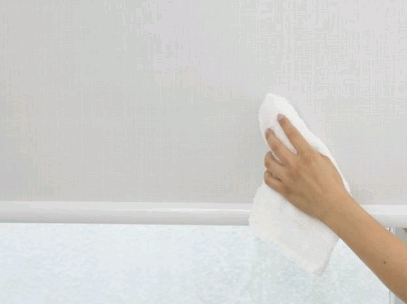
Tips And Tricks For Maintaining Clean Window Blinds
To maintain clean window blinds, it’s essential to regularly dust, vacuum, and spot-clean to prevent the accumulation of dust and grime. Using a protective spray can help repel dust and maintain the blinds’ cleanliness for longer periods.
Regularly dusting your window blinds with a microfiber cloth or duster can help prevent the buildup of dust. Vacuuming them with a brush attachment can remove deeper-seated dirt and debris.
For spot-cleaning, use a mild detergent or a solution of vinegar and water on a soft cloth, then gently dab the affected areas.
Applying a protective spray after cleaning can create a barrier against dust, making it easier to maintain your blinds’ cleanliness.
